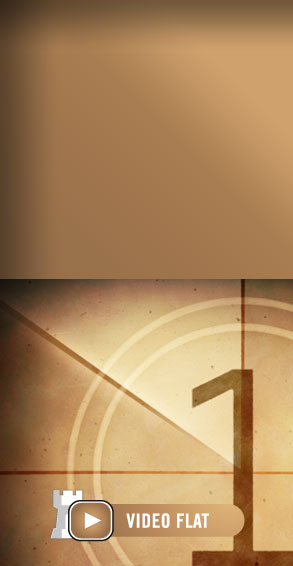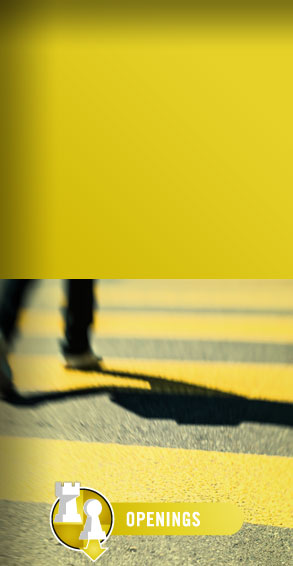
FIDE World Chess Championship Anand-Carlsen 2013
The FIDE World Chess Championship match between defending champion Viswanathan Anand and his challenger world number one Magnus Carlsen is taking place from November 9 to 28 2013 in the the Hyatt Regency, Chennai, India. The match is over twelve games, with time controls of 120 minutes for the first 40 moves, 60 minutes for the next 20 moves and then 15 minutes for the rest of the game, with an increment of 30 seconds per move starting from move 61. The games start at 3:00 p.m. Indian Time, which is 4:30 a.m. Eastern Standard Time (New York), 10:30h Central European Time (Paris), 1:30 p.m. Moscow Standard Time. Find your local time here.
Round one report
Historically, the most memorable matches, those that have captured the imagination of the world around them, are those with a conflict that transcended the players themselves, even though embodied by them. When Bobby Fischer challenged Boris Spassky for the title in 1972, it was more than the American’s charisma that fed the frenzy, it was the image of East versus West, in a world haunted by the Cold War. When Garry Kasparov fought against Anatoly Karpov in 1984-85, in spite of the iron curtain that still stood tall, it was seen as a clash between the old system and the promise of change, the Perestroika just around the corner. Now we have a clash of generations, in which we will witness the largest difference in ages since 1960, when the 23-year-old Mikhail Tal faced a 49-year-old Mikhail Botvinnik for a thrilling match.

Mikhail Tal was the youngest challenger ever in his day, at
the age of 23. Today, he would be celebrating his 77th birthday.
In fact, it is worth putting the question of Magnus Carlsen’s youth into perspective. Assuredly, at age 22, just three weeks shy of his 23rd birthday (November 30th), he ranks as the second youngest challenger ever after Garry Kasparov, but the difference over other legends is not as large as one might think. As already mentioned, Mikhail Tal was 23 himself when he challenged Mikhail Botvinnik for the title in 1960, and even Kasparov’s direct predecessor, Anatoly Karpov, was 23 years old when he defeated Viktor Korchnoi for the right to play Bobby Fischer for the title.
After so much hype, and the expectations to see Carlsen flex his Elo muscles, the interest in game one as he played white was huge.
Our on-site correspondent, Michael von Keitz reports:

For those with the vantage point, Anand could be seen seated off-stage prior to
things getting underway. He pulled at his lips and had a thoughtful expression
on his face, most likely taking a mental inventory of his final preparations.
There was a flurry of activity leading up to the official start, including last-minute adjustments by the chief arbiter, Ashot Vardapetyan, and a brief appearance by Geoffrey Borg on-stage. Then, the moment everyone assembled had been waiting for - the arrival of the players to the playing enclosure. They shook hands and Carlsen then quickly exited. Without a view of the clock, it was a little confusing at first, but it eventually became clear that the game had not yet started. Carlsen did return and could be seen clasping his hands and bowing his head, almost as though in prayer. I suppose appeasement of Caissa can never hurt. For those taking notes on the minutiae, Magnus adjusted his knights to face one another, while Anand turned both of his toward his opponent. Leave it to the psychologists out there to read into that.

The interest in the first game was beyond belief, and even the most optimistic chess fans and pundits had not properly anticipated it. Site after site went down due to overload. Our very own web client collapsed under the strain (though Playchess itself worked fine), and it was far from the only one. Even the official site’s video transmission, whether low resolution or high, kept freezing, and an hour into the game, the appearance of the video player changed its face, suggesting they had resorted to a backup to handle the load.

Although many sites had trouble handling the massive interest, Playchess held steady with
ample grandmaster commentary. Even non-subscribers could watch the games as a guest.
Unfortunately for the fans, the first game was a somewhat anti-climactic draw in sixteen moves. This isn’t to say it was uneventful, since much was gleaned from it. The first question was what the players had in store for opening preparation. Contrary to a tournament where a wide variety of openings are used to deal with each different opponent, here the repertoire will be much tighter as the players face each other day after day. Vishy Anand came to the battlefield armed with a Gruenfeld, and in his trademark approach, Magnus Carlsen avoided the sharpest mainlines, playing an uncommon double fianchetto setup, seeking to forego and advantage to ‘just play chess’. Whatever his plan though, it fizzled and failed to take off. His opening play went astray and on move twelve, a possible repetition was already on the board. One repetition was played by Black, and Carlsen could be seen grimacing on camera. He was now faced with the question: did he care to push it? He was not happy, but after a deep thought, the decision was made, and on move sixteen they shook hands.

FIDE president Kirsan Ilyumzhinov officially opens the match. Right behind him is
chief arbiter Ashot Vardepetyan, and to the right is FIDE Vice President D.V. Sundar

The players already shut out their surroundings as they focus on the board

[Event "FWCM 2013"] [Site "Chennai"] [Date "2013.11.09"] [Round "1"] [White "Carlsen, Magnus"] [Black "Anand, Viswanathan"] [Result "1/2-1/2"] [ECO "D78"] [WhiteElo "2870"] [BlackElo "2775"] [PlyCount "32"] [EventDate "2013.??.??"] [EventCountry "IND"] [TimeControl "40/7200:20/3600:900+30"] 1. Nf3 d5 2. g3 g6 3. Bg2 Bg7 4. d4 c6 5. O-O Nf6 6. b3 O-O 7. Bb2 Bf5 8. c4 Nbd7 9. Nc3 dxc4 10. bxc4 Nb6 11. c5 Nc4 12. Bc1 Nd5 13. Qb3 Na5 14. Qa3 Nc4 15. Qb3 Na5 16. Qa3 Nc4 1/2-1/2

And that was all she wrote
In the press conference after the game Magnus admitted to not being happy with the way things turned out. Move thirteen was a critical juncture, where 13.Qe1 allows ...Nb4. As he put it, he decided to pull the emergency brake and permitted the repetition. Psychologically, Anand had to be happy to hold with black to start the match, although it would have been interesting to see him probe a little. Asked if Black could have played on with a minimal advantage, Anand said computers might like such position for Black but it is difficult to find a strong line for and seize the advantage. He considered 14...b5, but said he couldn't see anything concrete and decided to make peace. "There was no option to play on," Carlsen agreed.
The Twitter comments by the experts were not quite as forgiving, and no doubt reflected the feelings of the disappointed fans:

ChessBase had its own Twitter feed ready and rearing to go, providing pictures and comments. Be sure to follow us to stay up to date, and do not hesitate to consult our guides for making the most of the world championship’s online experience.

You do not need to have a Twitter account to follow us
IM Andrew Martin analyzes game one:
The full video transmission of round one for replay:
Report by Albert Silver and Michael von Keitz
Score
|
Game:
|
Rtg |
01
|
02
|
03
|
04
|
05
|
06
|
07
|
08
|
09
|
10
|
11
|
12
|
Score
|
Perf.
|
| V. Anand |
2775 |
½
|
|
|
|
|
|
|
|
|
|
|
|
0.5
|
2870 |
| M. Carlsen |
2870 |
½
|
|
|
|
|
|
|
|
|
|
|
|
0.5
|
2775 |
Tournament details
Schedule: the match will be played over a maximum of twelve games, and the winner of the match will be the first player to score 6.5 points or more. If the winner scores 6.5 points in less than 12 games then the closing ceremony will take place on the day after the World Championship has been decided or one day thereafter.
07 November 2013 – Opening Ceremony
09 November 2013 – Game 1
10 November 2013 – Game 2
11 November 2013 – Rest Day
12 November 2013 – Game 3
13 November 2013 – Game 4
14 November 2013 – Rest Day
15 November 2013 – Game 5
16 November 2013 – Game 6
17 November 2013 – Rest Day
18 November 2013 – Game 7 |
19 November 2013 – Game 8
20 November 2013 – Rest Day
21 November 2013 – Game 9
22 November 2013 – Game 10
23 November 2013 – Rest Day
24 November 2013 – Game 11
25 November 2013 – Rest Day
26 November 2013 – Game 12
27 November 2013 – Rest Day
28 November 2013 – Tiebreak games
29 November 2013 – Closing Ceremony |


Live commentary on Playchess in English
| Day |
Round
|
Live Playchess commentary in English |
| Nov. 09 |
1
|
GM Daniel King + GM Simon Williams |
| Nov. 10 |
2
|
GM Daniel King + GM Yasser Seirawan |
| Nov. 12 |
3
|
GM Yasser Seirawan + GM Maurice Ashley |
| Nov. 13 |
4
|
GM Yasser Seirawan + GM Alejandro Ramirez |
| Nov. 15 |
5
|
GM Daniel King + GM Maurice Ashley |
| Nov. 16 |
6
|
GM Daniel King + GM GM Alejandro Ramirez |
| Nov. 18 |
7
|
GM Yasser Seirawan + GM Alejandro Ramirez |
| Nov. 19 |
8
|
GM Daniel King + GM Chris Ward |
| Nov. 21 |
9
|
GM Daniel King + GM Simon Williams |
| Nov. 22 |
10
|
GM Daniel King + GM Maxime Vachier-Lagrave |
| Nov. 24 |
11
|
GM Daniel King + GM Maurice Ashley |
| Nov. 26 |
12
|
GM Chris Ward + GM Simon Williams |
| Nov. 28 |
Tiebreak
|
GM Daniel King + GM Chris Ward |
Live commentary in other languages
| Day |
Round
|
French |
German |
Spanish |
| Nov. 09 |
1
|
GM Fabien Libiszewski |
GM Klaus Bischoff |
Leontxo García |
| Nov. 10 |
2
|
GM Fabien Libiszewski |
GM Klaus Bischoff |
Leontxo García |
| Nov. 12 |
3
|
GM Christian Bauer |
GM Thomas Luther |
Leontxo García |
| Nov. 13 |
4
|
GM Christian Bauer |
GM Klaus Bischoff |
Leontxo García |
| Nov. 15 |
5
|
GM Fabien Libiszewski |
GM Thomas Luther |
Leontxo García |
| Nov. 16 |
6
|
GM Fabien Libiszewski |
GM Klaus Bischoff |
Leontxo García |
| Nov. 18 |
7
|
GM Christian Bauer |
GM Klaus Bischoff |
Leontxo García |
| Nov. 19 |
8
|
GM Yannick Pelletier |
GM Klaus Bischoff |
Leontxo García |
| Nov. 21 |
9
|
GM M. Vachier-Lagrave |
GM Klaus Bischoff |
Leontxo García |
| Nov. 22 |
10
|
GM Sebastien Mazé |
GM Klaus Bischoff |
Leontxo García |
| Nov. 24 |
11
|
GM Sebastien Mazé |
GM Klaus Bischoff |
Leontxo García |
| Nov. 26 |
12
|
GM Yannick Pelletier |
GM Klaus Bischoff |
Leontxo García |
| Nov. 28 |
TB
|
GM Sebastien Mazé |
GM Klaus Bischoff |
Leontxo García |
The commentary will commence around 30 minutes after the start of the games. The schedule and commentators may be changed before the start of the Championship on November 9th, with long and short castlings possible.
























